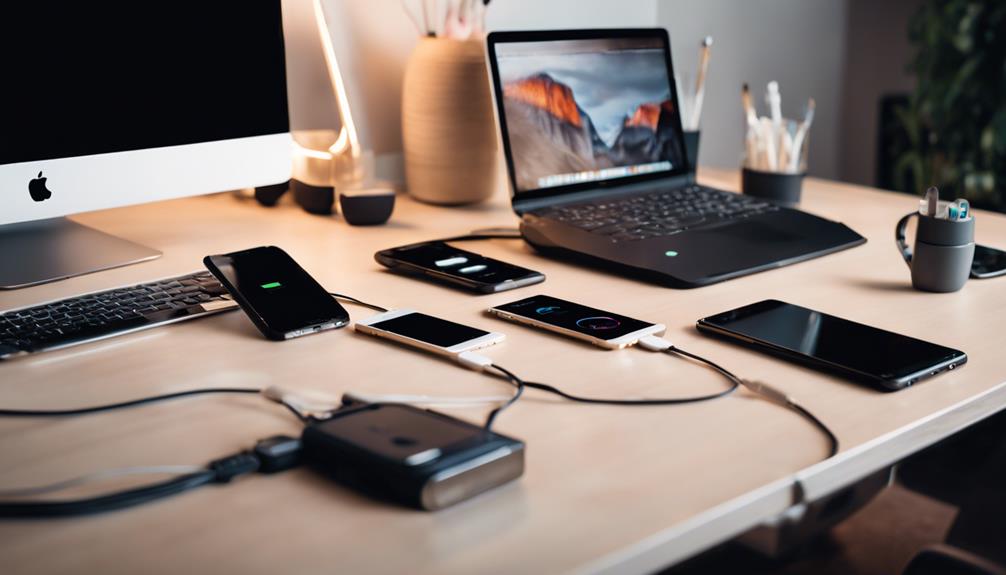In an age where financial literacy and security are paramount, the intrigue surrounding money hiding gadgets has grown significantly. These devices, designed to conceal cash or valuables, offer both practical solutions and ethical dilemmas. This article delves into the world of money hiding gadgets, exploring their various forms, uses, and the implications they carry in modern society.
What Are Money Hiding Gadgets?
Money hiding gadgets are innovative tools designed to securely store cash, cards, and other valuables while making them inconspicuous. They can range from everyday objects that serve a dual purpose to specialized devices created explicitly for concealment. Here are a few common types:Cool Gadgets For Traveling
- Hidden Compartments: Items such as books, alarm clocks, or even furniture that have secret compartments.
- Fake Household Items: Products like fake soda cans or food containers that are designed to look realistic while hiding valuables.
- Wearable Gadgets: Clothing or accessories that include hidden pockets or compartments.
- Smart Technology: Devices that incorporate technology for secure storage, such as password-protected safes.
The Purpose of Money Hiding Gadgets
Money hiding gadgets serve multiple purposes, catering to various needs and concerns. Here are some key reasons why individuals might invest in these concealment tools:
- Security: Protecting cash and valuables from theft, especially in vulnerable situations or locations.
- Privacy: Keeping financial information and cash discreet from prying eyes.
- Emergency Preparedness: Storing cash for emergencies in a safe yet accessible manner.
- Organizational Aid: Helping individuals keep their money and valuables organized.
Popular Money Hiding Gadgets
There is a wide variety of money hiding gadgets available in the market today. Here are some popular options:
1. Book Safes
Book safes are designed to look like ordinary books, but they contain a hollowed-out compartment for storing cash, jewelry, or important documents. They blend seamlessly into a bookshelf, making them an excellent choice for home security.
2. Diversion Safes
Diversion safes are everyday items that have been modified to conceal valuables. Common examples include:
- Fake soda cans
- Fake household cleaners
- Hidden compartments in wall clocks
These gadgets are particularly useful because they do not attract attention and can be placed in plain sight.
3. Hidden Pockets in Clothing
Many clothing brands now offer garments with hidden pockets designed specifically for money and valuables. These pockets can be found in jackets, pants, and even undergarments, providing a discreet way to carry cash securely.
4. Smart Safes
For those who prefer technology-driven solutions, smart safes incorporate biometric locks or digital keypads for added security. Some models even connect to smartphone apps, allowing users to monitor and control access remotely.
Case Studies: Real-World Applications
To better understand the practical applications of money hiding gadgets, let’s explore a few case studies:
Case Study 1: Travelers and Security
Travelers often face the risk of theft, especially in crowded areas. Many choose to invest in money hiding gadgets, such as hidden pockets in clothing or diversion safes like fake sunscreen bottles. A survey conducted by the Global Business Travel Association found that 60% of travelers have experienced theft while traveling, highlighting the importance of secure storage options.
Case Study 2: Home Security
In recent years, homeowners have increasingly turned to book safes as part of their home security strategy. A report from the American Security Association indicated a 20% increase in the use of hidden safes among homeowners in urban areas. These gadgets not only deter thieves but also provide peace of mind for families concerned about home invasions.
The Ethical Dilemma of Money Hiding Gadgets
While money hiding gadgets serve practical purposes, they also raise ethical questions. The potential for misuse, such as facilitating illegal activities or tax evasion, cannot be overlooked. Here are some points to consider:
- Facilitating Criminal Activity: Concealing cash can aid in illegal activities, making it difficult for law enforcement to track illicit funds.
- Tax Evasion Concerns: Individuals may use hiding gadgets to avoid reporting income, leading to significant legal implications.
- Privacy vs. Transparency: The balance between personal privacy and the need for transparency in financial transactions is a contentious issue.
Conclusion: The Balance of Security and Ethics
Money hiding gadgets offer a valuable solution for those seeking to protect their cash and valuables. With a wide range of options available, individuals can choose gadgets that best suit their needs, whether for travel, home security, or personal organization. However, it is essential to navigate the ethical implications associated with these devices. As society continues to grapple with issues of privacy, security, and legality, the role of money hiding gadgets will remain a topic of interest and debate.
In summary, while money hiding gadgets provide useful advantages in safeguarding assets, they also carry responsibilities. Understanding their potential for misuse is crucial for promoting responsible use and fostering a culture of transparency and security.
